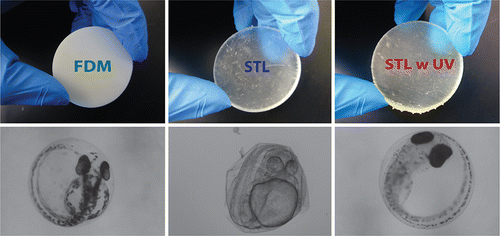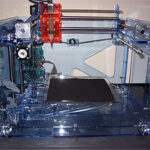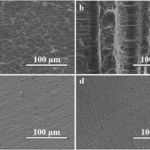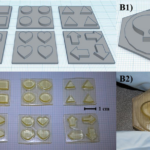

While vat photopolymerization, such as stereolithography (SLA) and digital light processing (DLP), is the oldest method of 3D printing, it’s only recently made its way to casual users. SLA and DLP used to be too expensive or impractical for consumers, but technological advances and the expiration of key patents have made it accessible to a broader audience, who now need to know its potential risks alongside its benefits.
Why Would Users Choose Resin Printing?
While extrusion-based 3D printing methods may be the most popular among consumers today, vat photopolymerization has several advantages. Since a laser can move swiftly across a bed and projectors can cure whole layers of material at once, it is typically faster than fused deposition modeling (FDM).
Vat photopolymerization printing isn’t just fast, either. It also produces stronger and more aesthetically pleasing finished products. Since lasers are far more precise than mechanical nozzles, these machines can make much higher-definition prints. The curing process of resin prints gives them a more uniform finish, resulting in more robust structures.
What Do Studies Say About Resin Printing Safety?
3D printing enthusiasts wishing to take advantage of these benefits should be aware of the risks of using photopolymer resins. Several experiments have found potentially troubling issues concerning resin printing safety.
A 2019 study examining material extrusion alongside vat photopolymerization, material jetting, and binder jetting found that all 3D printing methods emit potentially harmful contaminants into their environments. Vat photopolymerization releases volatile organic compounds (VOCs) like formaldehyde into the air, albeit in relatively small volumes. Lean manufacturing methods like this are framed as producing less waste, so these harmful emissions are unfortunate.
Researchers produced prints using several methods to reach these conclusions, testing the air and finished products for harmful contaminants. Using specialized lab equipment, they analyzed for VOCs, carbonyl compounds, airborne particles and dust. They also measured the testing environment’s indoor air quality before the experiment as a control.
The study found that while thermoplastic extrusion produced the most emissions, binder jetting and material jetting produced higher VOC levels than vat photopolymerization, though the latter, too, relies on photopolymers. While all of these emissions didn’t substantially impact indoor air quality, enough exposure could harm someone. The authors also noted that “chemical treatment of manufactured objects was found to be a severe volatile organic compounds source as well.”
Since this experiment tested so many printing methods, it’s a reasonably conclusive measure of printing techniques’ comparative safety. Still, the study doesn’t reference similar data from traditional manufacturing methods. That could make the findings somewhat misleading, which would be more of an issue if the researchers indicated any dramatic risks, but they don’t.

A similar study in 2020 tested four different 3D printing methods, including two resin-based techniques, for their emissions. The researchers used material extrusion, jetting, powder bed fusion and vat photopolymerization, measuring the air for VOCs, nano and micron-sized particles, and inorganic gases before and after. They then compared post-printing levels to occupational exposure limits.
The test found that, for all four methods, concentrations of these contaminants were far below safe limits. Material extrusion actually produced more submicron particles than resin printing methods, but these emissions didn’t pose a risk with proper ventilation. This study affirms that airborne emissions from resins are generally safe, but that’s not the only concern.
Another recent study led to some potentially more troubling findings. The research found that two resins popular in dental applications, DSG and DLT, both leach harmful compounds into their surroundings. As this happens, it can poison reproductive cells in mice.
The researchers in this study intended to see if printing resins could culture reproductive cells. They studied mouse oocytes in DSG and DLT trays. Cells in both trays developed abnormalities in their chromosomes, suggesting toxicity.
These results show that DSG and DLT can poison mouse cells in an in vitro setting. Developments like these in mice normally also occur in humans, but it would require more testing to be sure. It’s also uncertain if this would happen in a natural, in vivo setting without further experimentation.
Can You Handle Resins Safely?
These studies indicate some risks with vat photopolymerization but don’t claim or show that it’s entirely unsafe, either. While these health risks are potentially severe and warrant further research, they’re mostly avoidable. Careful handling will prevent many, if not all, of these adverse effects.
Like many manufacturing materials, resins come with a material safety data sheet (MSDS). These documents list the potential risks and how to handle the material appropriately. Before using any resin or printer, users should refer to these.
Since resin printers tend to emit more VOCs than other methods, they require ventilation. Users should only ever print in well-ventilated areas, possibly even using a respirator or mask to avoid inhaling any emissions. Similarly, users should always wear gloves to prevent getting resins on their skin.
Given the potential risk of cancer and reproductive issues, people should never ingest resins. Even cured resins could leach toxins into the environment, so consumers should be careful to keep printed objects out of their mouths.
3D Printed Resins Require Caution
If people take the proper precautions, resin printing isn’t something they should avoid. Studies have shown that these materials come with risks, but most of them are preventable. Still, users must be aware of these potential dangers so they can act responsibly.
Since recent studies have hinted at previously unknown health risks, users should be careful with resins. More research might reveal additional potential hazards. Until then, it’s reasonably safe to say that with the right amount of caution, resins aren’t inherently dangerous.
When it comes to 3D real estate visualization in the USA, our service provides the perfect solution for bringing property listings to life. Through our platform, you can easily access cutting-edge 3D renderings that showcase your real estate projects in a way that attracts potential buyers and investors. Whether it's residential, commercial, or mixed-use properties, our team of experts uses advanced technology to create immersive visualizations that highlight the best features of your property, making it easier for clients to imagine the space as their own.
Through our website, you can quickly get high-quality 3D real estate visualizations that are tailored to your specific needs. With our help, you'll stand out in the competitive real estate market by offering potential buyers a realistic, interactive view of your property. Our efficient process ensures a fast turnaround time, while our attention to detail guarantees that every aspect of the property is represented accurately, giving you a powerful marketing tool to promote your real estate listings.






